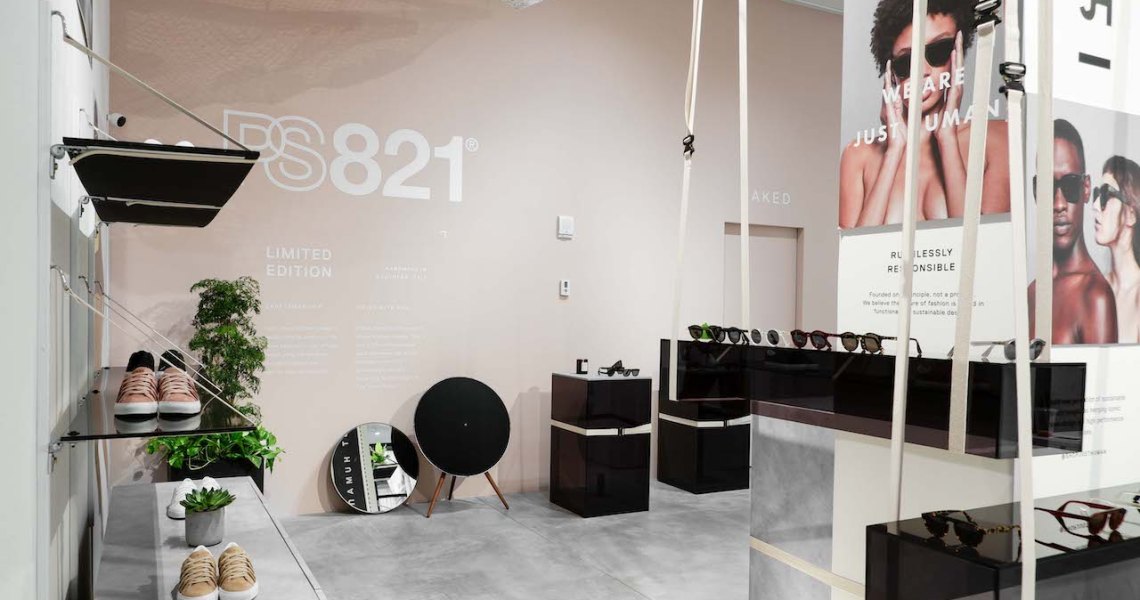Hoping to take advantage of the wave of digitally native brands now looking for growth opportunities, companies like Naked Retail Group and more are popping up, offering up collaborative retail spaces helping them break into brick-and-mortar.
The company leases three spaces in New York City. The latest one is inside Soho hotel in New York, with plans for more spaces in coming months. Smaller brands, most without any physical retail experience, can lease some square footage inside these spaces, all prime New York City real estate, for a fraction of the cost. At the company’s newest location, a takeover of one-quarter of the space runs about $15,000 to $20,000 a month for 150 to 200 square feet. A takeover of half the space, 300 square feet, runs between $30,000 and $40,000 a month.
To date, brands including luxury eyewear startup Just Human Eyewear, shoe brand PS821, Krave Beauty, Andie Swim, They Shoes and more have rented space with Naked Retail Group to kickstart their retail efforts. The model of companies leasing to brands small sections of larger stores is catching on. Showfields and Neighborhood Goods, for example, have both launched with the idea of lowering the barrier to entry into physical retail.
Just Human Eyewear launched just four months ago and early on gained a lot of traction with customers, said co-founder Craig Gonsenhauser. The company sells sustainable, luxury eyewear made with high-performance lenses. However, potential shoppers kept asking if the brand had a showroom or physical store where they could try the products on. Naked Retail Group reached out to the brand shortly after it launched, offering them a chance to open a space inside one of their shared retail locations in Soho.
“We’re targeting the luxury consumer, and we really wanted to offer a tactile experience, whether it be for consumers to test the performance in the lenses, the weight of the product or the fit. That can all be done through a retail experience,” said Gonsenhauser.
At just four months in, opening a retail space in a prime area in NYC would have been far too costly for the brand, he said. With this partnership, the brand has a small space to show its entire collection. Naked Retail Group handles details like hiring and training the staff, designing the space, building any fixtures the brand might need and inventory management. The brand can contribute its own ideas, but Naked Retail Group does most of the heavy lifting. “We basically hand-hold the entire process,” said Justin Kerzner, president of Naked Retail Group.
Naked Retail Group shares sales data, foot traffic and any first-hand customer feedback with participating brands.
While Just Human Eyewear declined to share specific sales figures, Gonsenhauser said sales have been strong and indicate that the brand could eventually open its own retail store. To drive customers to the space, the brand has mostly relied on sharing the location on its Instagram account and its website. As for Naked Retail, the company is also leveraging its social media accounts to showcase new brands and is using emails to market to its existing customer database.
Outside of cutting costs, a big perk to the collaborative space is the discovery element — shoppers come in looking for one brand and find a new favorite, said Rachel Shim, marketing and communications manager at Krave Beauty. The brand, founded in December 2017, started working with Naked Retail Group in June. The discovery aspect of the spaces is a big draw for a lot of lesser-known brands.
It can also help a brand find out what types of shoppers are interacting with the brand and interested in the products, said Ronen Glimer, co-founder and COO of NYC-based marketplace Artists & Fleas.
“For the seller, who may have a target in mind, they may think that their product speaks to one customer. These collaborative retail spaces are probably the most efficient way to discover who your audience is versus imagining it’s one person in particular,” said Glimer.
However, not owning the entire space can have drawbacks, especially as the brand starts to grow.
“There are pros and cons. In terms of the space, you can’t make it so branded. When a consumer walks into the store, it’s not your brand, but that is also why we are able to do it at such a low barrier cost,” said Shim.




